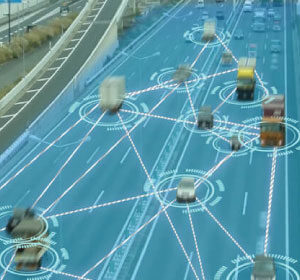The Internet of Things is bringing a profound revolution to predictive maintenance and connected field service management, creating new business models.
McKinsey states that IoT will have an economic impact of $4 trillion-$11 trillion a year by 2025. The majority of the effect, up to $3.7 trillion, will be generated by factories in operations management and predictive maintenance.
IoT is changing the way we approach maintenance, generating more significant savings and less downtime because we can now monitor the smallest details and perform maintenance precisely when needed.
IoT also enables field service workers to connect instantly to the backend through mobile smart devices and mobile field service management software, giving everyone up-to-the-moment information.

IoT and Predictive Maintenance
Businesses used to perform scheduled-based maintenance, which often replaced parts before they needed it or resulted in breakdowns because failures happened without warning.
Today, sensors and software enable companies to monitor the smallest parts, collecting real-time data that flows to a central hub. Service technicians can have the precise details they need before being dispatched, reducing the need for multiple visits.
The most significant problem McKinsey identified with IoT predictive maintenance lies in the sheer volume of data it generates and how operators use the information. Many operators use only 1% of the available information, and they use it to detect and control anomalies instead of for prediction. However, the greatest value of the data being generated lies in optimization and prediction.
Employing the right field service management software to shift the focus away from detecting and controlling anomalies to maintenance prediction will optimize the use of collected data, generating the largest financial impact and most customer satisfaction for service-based companies.
IoT and Connected Field Service
The best mobile field service software integrates seamlessly with any IoT platform, enabling edge computing and connecting service departments with field personnel to experience numerous benefits.
- Predict and prevent downtimes. A Vanson Bourne research study found “82% of companies have experienced at least one unplanned downtime outage over the past 3 years. Zero unplanned downtime is now the No. 1 priority or a high priority for 72% of organizations.”
- Improve first-time fix rates by having the right data to make the correct diagnosis. The best workforce management software sends the right worker with everything he needs to a site ready for him. The need for repeat visits is reduced.
- Generate work orders automatically with the proper support documents and parts. Fewer backend personnel can do more when they have the best field service management platform.
- Tablets and wearable displays increase wrench time —the amount of time service personnel spend working on the problem rather than chasing information and parts.
- Optimize customer relations. . One bad experience with customer relations can quickly lose that customer. Customers stay happy when field service workers can keep them involved in the decision-making process and provide on-the-spot information with the right field service management solution.

The future of IoT and predictive maintenance
-
- Edge computing will continue to grow. As data volumes increase, significant savings in bandwidth expenses and computing time can be achieved with edge computing on the job site.
- Digital twin use will increase. The benefits of virtual representations of a system, process, or object will provide advanced insights into performance and potential problems.
- Data analytics will assume increased importance as data volumes grow and businesses demand useful insights that help them make informed, intelligent decisions.
- Advanced predictive maintenance solutions are going to be driven by artificial intelligence. Machine learning may eliminate the need for a human presence in many areas.
It’s an exciting time for IoT and predictive maintenance. Having the right software that successfully brings together all of the elements of predictive maintenance is essential to reap considerable savings and stay ahead of competitors.

